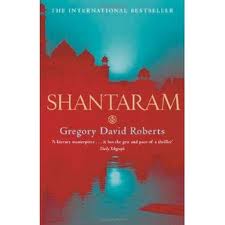
After a welcome and very digestible diet of P. G. Wodehouse and James Herriot, I felt that it was time for me to expand my literary cuisine to include more substantive choices. My mum had quite enthusiastically mentioned a book she had borrowed from her local library called ‘Schwarze Magnolie’ and when I visited her during my February school holiday I was suitably intrigued. So I picked it up and I have to confess, I found it hard to put down.

‘The Girl With Seven Names’, as it is called in English is written by Hyeonseo Lee, a North Korean woman in her early 30ties who escaped the dictatorship in North Korea and spends over 11 years trying to find safety and her place in the world. I have to admit that prior to reading the book I was slightly ignorant of the full extent of the supression in North Korea. The scope of my knowledge was limited to what I had heard on the news, which was predominately related to the military power feud between North Korea and the US.
The book was a real eye opener and left me feeling rather humble, somewhat ignorant and with a sense of having always taken things for granted in my own life. I am by no means an uninformed person but I guess my worldview has, like that of many others, been largely guided by the content of my education and indeed the coverage the Western media has chosen to show of the North Korean situation.
‘The Girl With Seven Names’ spoke to me on a number of levels. Firstly, I have an avid appetite for learning and expanding my own knowledge, and almost everything in this book was new for me. Secondly, I am a strong human rights advocate with a keen sense of justice and the full extent of the dictatorship, propaganda and human rights abuse in North Korea astounded me. And finally, Hyeonseo Lee is just a few years older than I am, which made her story all the more real and close to home for me. While reading the book I often found myself wondering what I would have done in her situation. Her tenacity, spirit, determination and unbelievable perseverance in the face of so many obstacles and setbacks is astounding.
While the majority of her book is worlds away from my largely privileged and cushy life growing up in Northern Europe – I am in no way making any parallels to my own experiences – there were some parts of Hyeonseo Lee’s struggle that I could identify with. She spends a significant portion of her twenties and early thirties trying to deal with an identity crisis. Since leaving North Korea at the age of 17, she not only changed her name seven times in order to ensure her safety, but she also struggled to integrate, to find her place in the world and to find out where she belonged: is she North Korean, Chinese or South Korean? Where is home? I think this issue of identity crisis – although not usually to this extent – is one that many people of my generation, myself included, have to deal with. In the fluid modern world that we live in, people are constantly moving from one country or continent to another for numerous reasons including to be with family, in search of work, in order to migrate or simply to explore the world.
I think the key to survive if one does move around a lot and when dealing with an identity crisis is to really give oneself the time to settle and integrate. No matter where you go, some or all aspects of the change will be difficult and at times unbearable, but you have to give things time. I myself am guilty of cutting and running as soon as things start getting hard, rather than weathering it out and giving things a chance. We humans are strong, adaptable creatures, our problem I believe, is that we simply think too much. If against all odds Hyeonseo Lee could do it, we all can. She’s my new hero, a truly remarkable woman and a truly inspirational story. ‘The Girl With Seven Names’ is most certainly a worthy read.
























